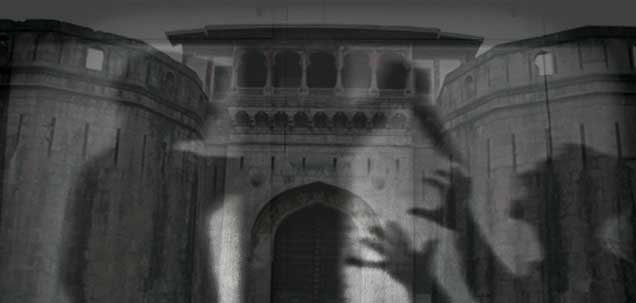 The mighty Maratha empire was now already tottering. Still smarting from the vicious defeat at the hands of the Afghans at Panipat, the Marathas had retreated to become some sort of a feudal power. Their geographic expanse was still considerable, but the empire’s invincibility had been shattered once and for all. Peshwas who led the Maratha empire at this time were not the Great Marathas of yore, they were feeble, cautious and prone to conspiracy and deception.
The mighty Maratha empire was now already tottering. Still smarting from the vicious defeat at the hands of the Afghans at Panipat, the Marathas had retreated to become some sort of a feudal power. Their geographic expanse was still considerable, but the empire’s invincibility had been shattered once and for all. Peshwas who led the Maratha empire at this time were not the Great Marathas of yore, they were feeble, cautious and prone to conspiracy and deception.
It was at this time that the 17 year old Narayanrao was crowned Peshwa at Shaniwarwada in Pune. Since the boy was young, his Uncle, Raghunathrao was appointed as the regent. Raghunathrao was the archetype of Maratha rulers in this era. He was corrupt and morally bankrupt. He had previously joined forces with the Nizams, the mortal enemies of the Maratha to wrest the throne from his nephew, Madhavrao.(Incidentally, Madhavarao was counted as one of the tallest Maratha leaders, bringing in a semblance of normalcy in the tumultuous times that followed the third battle of Panipat). Over the years, however, all had been forgotten and he was named as the regent to the young Peshwa, upon Madhavrao’s death. Raghunathrao’s wife Anandibai was even more corruptible and prone to hatching conspiracies to win the crown for her husband.
Unfortunately for Narayanrao, his lack of political acumen proved to be a serious impediment in his ability to establish himself. Surrounded by advisers who poisoned the mind of the young ruler, Narayanrao, steadily lost trust of his uncle. His uncle, ever the astute politician, used every opportunity to assert himself. In 1772, Narayanrao, decided to put his uncle under house arrest. Thus began the undoing of the young king and the Maratha empire.
The Maratha had always drafted mercenaries for fighting their wars. These mercenaries had been drafted into a corps, known as Gardis. Enraged and Incensed at his nephew’s order to confine him, Raghunathrao shot off a letter to Sumer Singh Gardi. The letter, simply read “नारायणरावांना धरा “, meaning catch Narayanarao. However, before the letter could reach its desination, it fell into Anandibai’s hands, who, with all her cunning, changed the “ध ” to “म “, making the sentence read, “नारायणरावांना मारा“, meaning kill the boy.
On Anant Chaturdashi, 1773, Peshwa Narayanrao took to his heels, trying to dodge the Gardis who chased him through Shaniwarwada. The panic stricken boy screamed at top of his voice, “काका मला वाचवा“, “Uncle save me“, but his Uncle did not come to his rescue. Sumer Singh Gardi caught hold of the young boy and ran his sword through him, it is believed in Raghunathrao’s presence. The Peshwa, hardly 18 years old was hacked into so many pieces, that his body had to filled up in an earthen pot. At midnight, when noone was watching, the boy was cremated.
Raghunathrao’s reign as Peshwa was short. The scandalous act of regicide had brought ill fame to the Marathas. An enquiry into this incident by the renowned jurist, Ram Shastri Prabhune, found Rahunathrao and his wife guilty for the young Pehswa’s murder. Nana Phadnavis became the regent while the dead Peshwa’s one year old son was crowned Peshwa. Raghunathrao, subsequently waged war against the the Maratha, allying with the British and then the Portuguese, but to no avail. He died full 10 years after he had had his nephew murdered. His wife, atoned for her sins in line with the customs prevalent then, but resumed her plotting and treachery. She never returned to Pune and died in 1794.
One of the gates of Shaniwarwada, called Jambhul Darwaaza was renamed Narayan Darwaza. It is believed, Narayanrao’s hacked body was carried out through this gate. Another area in Shaniwarada’s vicinity is now called Narayanpeth, after the slain Peshwa. It is also believed that Shaniwarwada is haunted and that on moonless nights, many have heard “काका मला वाचवा ” shatter the silence of this otherwise empty fort.
































